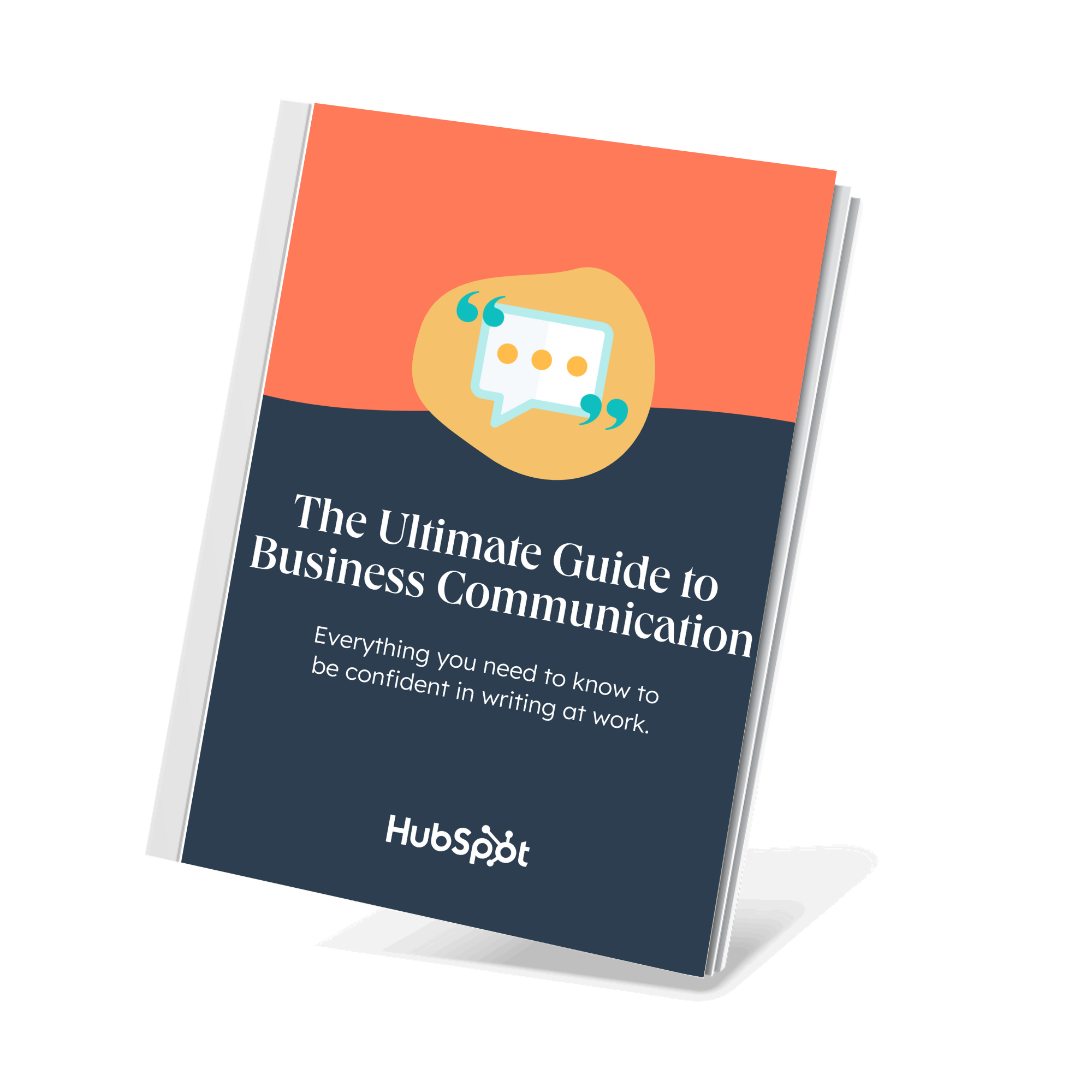'Dear Sir or Madam'
'Dear Sir or Madam' is an outdated salutation traditionally used to open formal business emails. It should be avoided for a few reasons: First, today's digitally connected world makes it easier than ever to find out who you're emailing. Second, this greeting may not be reflective of the recipient's gender. And third, it's vague and a bit lazy. Be more proactive about searching Google, LinkedIn, or the company's website to learn more about the person you're addressing your email to.
When is it appropriate to use "Dear Sir or Madam?" In today’s business world, that answer is "Never." I’ll also accept, "Fifty years ago" and "Hell no," for good measure. But it’s polite! It’s business formal! You’ve seen it done countless times! So, why should you avoid it?

The average office worker receives approximately 121 emails each day and only sends about 40. That means, not only are people receiving more email than ever, they’re responding to fewer as well.![Download Now: The Ultimate Guide to Business Communication [Free Guide]](https://no-cache.hubspot.com/cta/default/53/a7ff318c-b341-4687-b4d8-4b4c98745451.png) Ideally, you want to grab your recipient’s attention in 30 seconds or less, and starting with "Dear Sir or Madam" is not a great way to do this.
Ideally, you want to grab your recipient’s attention in 30 seconds or less, and starting with "Dear Sir or Madam" is not a great way to do this.
Don’t let your first impression be the wrong one, and never sacrifice good communication skills for what seems like a quick-and-easy win. Here are a few reasons why you should never use "Dear Sir or Madam" and several alternatives to employ in its place.

Free Business Communication Guide
Communication tips to use throughout your professional career.
- Communicate to your audience
- Write with clarity
- Craft effective message
- Improve word choice
Why You Shouldn’t Use "Dear Sir or Madam"
1. It’s lazy
In the age of the internet, it’s possible for you to find almost anyone’s name and information. Spend time on a company’s website or LinkedIn page to gather clues about who you should email.
If you need to send an email to the company’s marketing manager but don’t have their information, send an exploratory email to the generic company inbox -- usually found on the "About Us" or "Contact Us" page.
Briefly introduce yourself and ask for the administrator’s help in connecting with the right person. For example:
Hello [Company name],
I have a question for the marketing manager in charge of your social media accounts. Are you able to provide me with that person’s name and email address or connect us directly?
Thank you,
Meg Prater
.webp?width=1000&height=67&name=send-now-hubspot-sales-bar%20(5).webp)
It will require a little more time than sending a direct but unaddressed message to the team or person you’re trying to reach, but this approach also signals you’re interested in learning who this person is and how to address them correctly.
You’re also more likely to get a response to this request for help than if you send a canned email addressed "Dear Sir or Madam."
Another common scenario in which to use "Dear Sir or Madam" is when turning in a cover letter or resume for a job. It can be difficult to know who you’re submitting your application to, but this isn’t an excuse to slap a "Dear Sir or Madam" on your greeting and call it good.
Instead, customize it to the department you’re applying to or the hiring manager who will inevitably read your letter.
For example, if you’re submitting a cover letter for a job in the Sales Department, address your application to, "Dear Hiring Manager," or "Dear [Company name] Sales." These salutations are friendlier, less formal, and give you an accessible, conversational first impression.
2. It’s exclusive
Not everyone will identify with "Sir" or "Madam." You never want to offend or assume the gender conformity of a business associate or peer. If you do guess a contact’s gender -- and guess wrongly -- you’ll immediately raise red flags and risk your ability to do business with them.
Before you’ve even begun to tell them the reason for your email, you’ve proven you haven’t taken the time to learn who they are. So, why should they take the time to hear what you have to say?
As a rule of thumb, never assume your email recipient identifies with "Sir" or "Madam," even if their name or email address leads you to believe one or the other of these greetings would be appropriate. Take the time to learn who they are, and if you have their name, use it in your greeting.
3. It’s a symptom of a larger problem
There are usually two scenarios in which you use "Dear Sir or Madam" and neither are promising. Either you really don’t know the recipient’s name and you’re going to send them an email anyway or you’re sending bulk email you don’t have the time or resources to personalize.
These situations are symptoms of a larger outreach problem. If you don’t know the name of your email recipient but still feel you must email them, consider modernizing your outreach strategy. Emailing someone you don’t know is called "cold email" and is generally considered a bad thing.
Take time to learn who you’re emailing, connect with them first by following and engaging with them on social media, and enjoy better response rates and richer relationships born from "warm outreach."
If you’re sending bulk email and find yourself without the time or resources to customize your outreach, this is a larger problem. A recent study by Experian shows transactional or triggered emails receive eight times more opens and greater revenue than regular bulk emails.
Bulk email is also more likely to send your emails -- even your non-bulk emails -- to spam. And many businesspeople have found bulk emails have stopped working for them altogether.
Personalized emails are what earn today’s salespeople the open. Learn who you’re emailing, what’s important to them, and why they should listen to what you have to say.
4. It’s like saying, "Hi, I’m a stranger"
"Dear Sir or Madam" is like starting an email with, "Hi, I’m a stranger," or "You don’t know me but …" If you’re a salesperson, you don’t want this to be the tone you set for prospect outreach.
You want to be as familiar and friendly with as possible -- and that requires you to research and get to know them.
If you’re reaching out to a business associate for the first time, your first impression should be that of someone who’s proactive and curious about learning who they are.
And if you’re submitting a cover letter or resume, your first email should be one that sets you apart from the crowd -- something "Dear Sir or Madam" does not do.

Free Business Communication Guide
Communication tips to use throughout your professional career.
- Communicate to your audience
- Write with clarity
- Craft effective message
- Improve word choice
'Dear Sir or Madam' in an Email
I've explained why you shouldn't use 'Dear Sir or Madam,' but how do you put that advice into practice when you're composing, say, an email?
If you can't find any information about the person you're emailing, it might be appropriate to use, "To Whom It May Concern." It's formal, respectful, and inclusive.
Before using this greeting, however, ask yourself, "Who is the intended recipient of this message?" If that answer is, "Anyone," use "To Whom It May Concern."
'Dear Sir or Madam' Cover Letter
When addressing someone in a cover letter, it's important to be formal without resorting to "Dear Sir or Madam."
If you conduct your research and still can't find who to address your email to, consider using an alternative like, "Dear Hiring Manager," or "Dear [Team name]." For example, if you're applying for a position on a company's sales team, you might say, "Dear Sales Team."
This ensures your language is broad but also personalizes your greeting slightly.
"Dear Sir or Madam" Alternatives
We’ve talked about why you should leave "Dear Sir or Madam" in the Mad Men era, but you need something to use instead. So, what should it be? Here are a few good alternatives:
- "Hello, [Insert team name]"
- "Hello, [Insert company name]"
- "Dear, Hiring Manager"
- "Dear, [First name]"
- "To Whom it May Concern"
- "Hello"
- "Hi there"
- "I hope this email finds you well"
- "Dear [Job title]"
- "Dear Recruiter"
- "Dear Customer Service Team"
- "Dear Search Committee"
- "Good Morning"
Tact, effort, and time are the three magic ingredients required for sending responsible, successful business emails. Make sure you give each piece of correspondence the same attention -- no matter how small or insignificant it might seem.
And make sure you don’t kill all your good work in the greeting with crutch words, a lackluster message, or the wrong sign off.

Free Business Communication Guide
Communication tips to use throughout your professional career.
- Communicate to your audience
- Write with clarity
- Craft effective message
- Improve word choice






![Confused About I.E. vs. E.G.? When to Use Each [With Examples]](https://blog.hubspot.com/hubfs/ie-vs-eg-fi%20%281%29.jpg)


